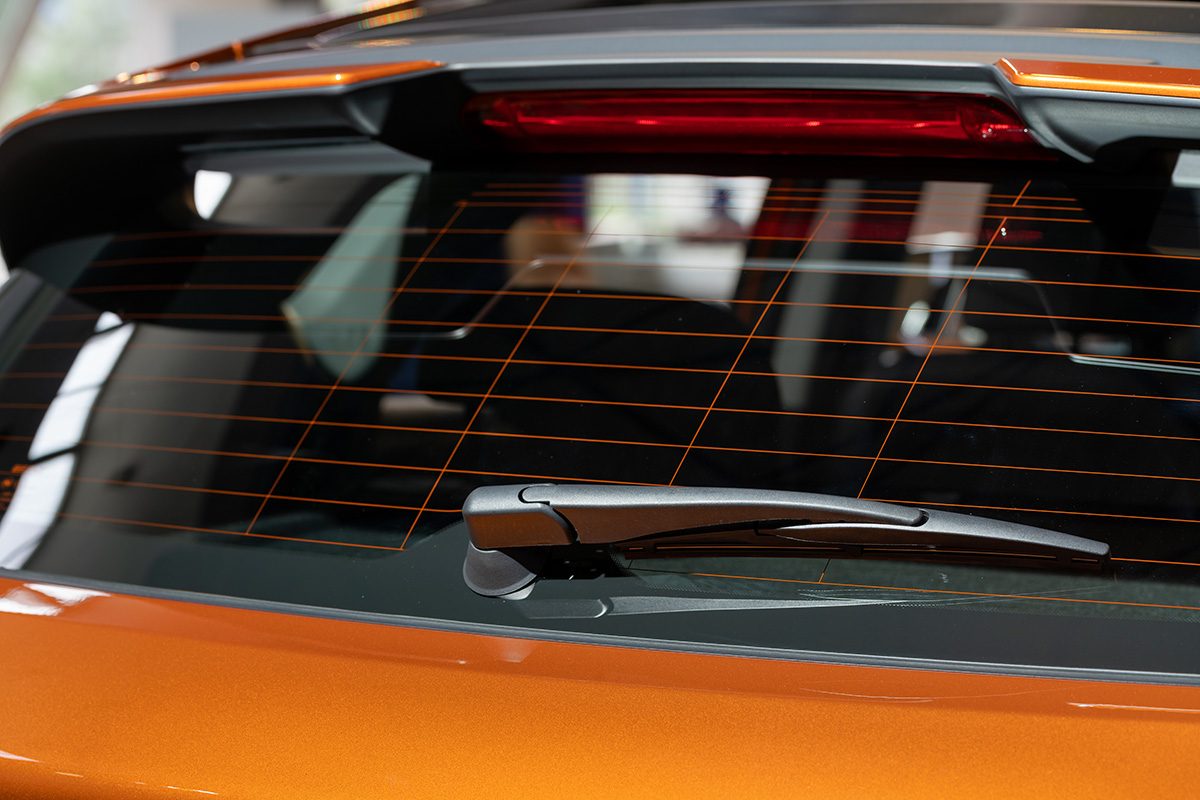They're super handy ... and you might be surprised by what they actually are

This Is the Real Reason Cars Have Lines on the Rear Windshield

You’re driving along, lost in thought or singing to your favorite song, when your eyes drift to the rearview mirror … and there they are. Those thin, straight lines stretching across the back window like someone tried to underline the view. They’re always there, but why? And what are they, exactly?
They don’t seem purely decorative. They’re too neat, too purposeful. And they’re only on that one window—not the sides, not the front. So what gives? If you’ve ever wondered about this car window feature, you’re in the right place, and let’s just say those lines aren’t riding along for the view.
Read on to find out why those little black lines grace most back car windows and why they’re more important than you might think.
Get Reader’s Digest’s Read Up newsletter for more fun facts, humor, cleaning, travel and tech all week long.
Why do cars have lines on the rear windshield?

The short answer: They’re heating elements. Officially, they’re called defroster grids or heater grids, and they help keep your rear view clear by melting frost, evaporating condensation and improving visibility. That means they’re particularly useful in snowy, icy winter months.
“It’s basically a mini heater built into your glass,” says Tyler Rhodes, the education manager at the Universal Technical Institute in Avondale, Arizona. “Once you hit that rear defrost button, electricity flows through those lines and warms up the window—kind of like a heated seat or even your house heater.”
These lines—which are actually very thin wires made from metal and resin—have been a staple on cars for decades, especially on wagons and sedans. You might also spot them on side windows in the back of some vehicles, but never the front windshield. (More on that in a minute.)
Why are they on the back window, specifically?
The reason you don’t see them on your front windshield is simple: They’d block your view. Safety and design priorities mean no grid lines where your eyes are most focused.
“Front defrosters work differently,” Rhodes explains. “When you turn that on, you’re actually activating the AC as well. It pulls moisture out of the air and blows warm, dry air on the inside of the glass.”
Back windows, especially in cars with no rear AC vents, don’t have that luxury. The defroster grid is a low-weight, efficient solution to keep your view clear—and it barely adds any extra mass to the vehicle, which matters in a world where every ounce affects fuel efficiency and emissions.
Are these lines also useful in the summer?
We tend to associate defrosters with cold weather, but those little lines pull their weight in the summer too. On hot, humid days, condensation can collect on the inside of your rear windshield—especially after blasting the AC or parking in the shade.
“People don’t always realize it, but the rear defroster helps clear moisture year-round,” says Rhodes. “Even when it’s hot, you can still get fog buildup inside, and that can mess with visibility just as much as frost does in the winter.”
The challenge? When everything’s already hot, it can take a minute for the system to do its thing. So if you’re cranking the AC but still seeing haze in the back window, hit that defrost button—it’s not just for snowy mornings.
When did this line thing start?
Heated rear windows started appearing in the 1970s, around the same time seat belts became standard. Back then, the wires were thicker and more visible—sometimes even spiraled, like an old-school phone cord, Rhodes notes. These days, they’re thinner, more refined and tucked away as much as possible.
Nearly all modern vehicles have the lines on the back windows, though there’s no specific law mandating it. What is regulated, though, is visibility—drivers are legally required to maintain a clear view, and defrosters make that possible.
Other windows don’t typically get the same treatment, mostly due to cost, complexity and engineering challenges.
Do they serve other purposes?
Yes, those rear-window lines can pull double duty. Depending on the manufacturer, they may be part of a separate electrical circuit used for things like radio antennas or even keyless entry systems.
“You’d never know just by looking—they blend right in with the defroster grid,” says Rhodes. “It really depends on the engineering choices of the manufacturer. Sometimes it’s all one system; other times the lines are part of a separate circuit.”
Yes, your rear window might be helping you tune into classic rock and unlock your doors. So give them a nod of appreciation. They may not be flashy, but they’ve been quietly going the extra mile for you.
RELATED:
- Are Car Headlights Much Brighter All of a Sudden—Or Is It Your Imagination?
- Here’s How to Tell Which Side of the Car Your Gas Tank Is on—Without Getting Out
- This Hidden Smartphone Feature Could Prevent Thousands of Car Crashes, Yet 85% of People Don’t Know How to Use It
About the expert
|
Why trust us
At Reader’s Digest, we’re committed to producing high-quality content by writers with expertise and experience in their field in consultation with relevant, qualified experts. We rely on reputable primary sources, including government and professional organizations and academic institutions as well as our writers’ personal experiences where appropriate. We verify all facts and data, back them with credible sourcing and revisit them over time to ensure they remain accurate and up to date. Read more about our team, our contributors and our editorial policies.
Sources:
-
Tyler Rhodes, education manager at the Universal Technical Institute; interviewed, June 2025
-
Kryger Glass: “What are the Lines on the Back Windshield For: A Detailed Explanation”
-
Glass USA: “What Are the Lines on My Rear Windshield For?”



